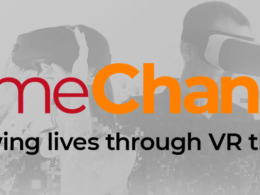German researchers create highly detailed 3D avatars with a mid-range smartphone - in just 20 minutes. Using only two video recordings, the application is then even supposed to allow for animations.
A team of researchers from the University of Bielefeld, Würzburg and the TU Dortmund University present a method with which they can create 3D avatars using a single smartphone camera. Two video recordings form the basis for the virtual image of a human being. The entire process of virtually reconstructing a human being should take about twenty minutes. To capture the model, they need two normal video recordings: one for the body, another for the head. No 3D scanner is needed, the ordinary smartphone camera is sufficient.
In conventional monocular reconstructions, only a full-body scan is usually performed. However, according to the researchers, a separate recording of the head should ensure a significantly higher quality of detail in this area.
With the head scan, the smartphone is moved in a circle around the head once in one go. For the body scan, it is two seamless rotations in a row. The first pass records the head, torso and arms, the second is about the hips, legs and feet.
Expensive camera vs smartphone - almost no difference
For comparison, the team created avatars with a professional multi-camera system. As the image below shows, the smartphone scans are at a similar level to those of the professional setup. After all, this comprises 48 cameras.

The direct comparison: on the left the smartphone scan, on the right the model of the multi-camera professional system. | Image: Stephan Wenninger
The team states that their avatars can also be used in XR applications. They are compatible with all standard engines and skeletal and facial animations are also said to be possible. Movements range from eye movements and grins to complex dance moves with animated arms and legs. These are created using Faceware Studio and the Unitiy Live plugin. Let's hope that with the animation the avatars look a little less scary than in the pictures 😉
This application can be combined very well with all kinds of events and trade fairs, where you would like to see your counterpart almost as if it were real.
Source: Mixed









